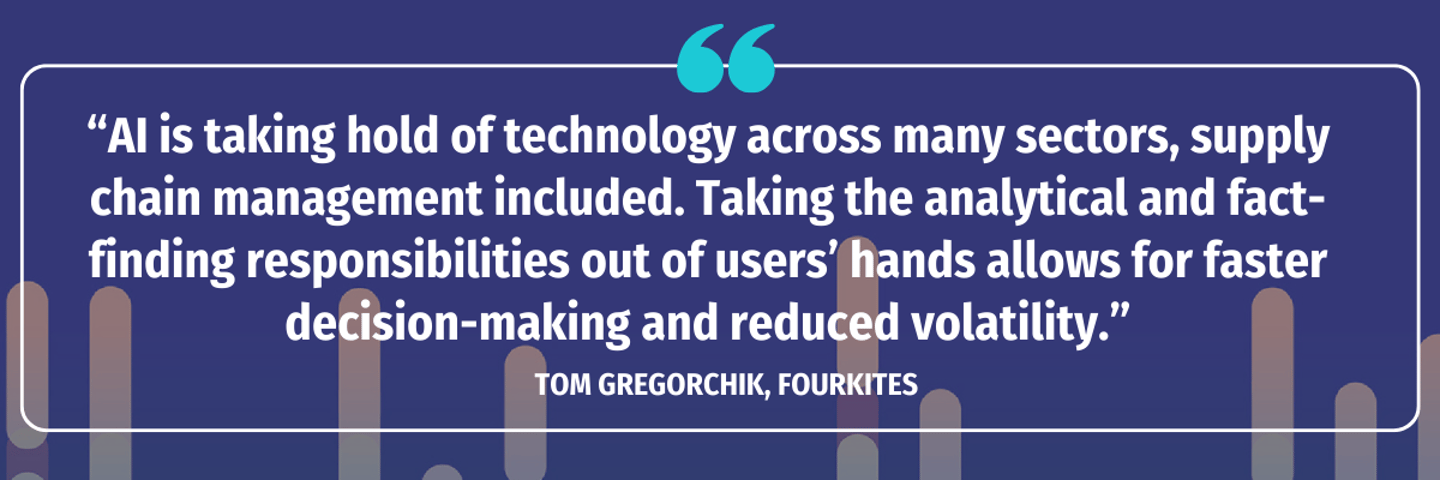What are the Three Technologies that are Reinventing the Supply Chain?
Though it’s hard to pin down the most impactful new technology in supply chain management, there are at least three that are expected to have a significant impact on transforming consumer goods supply chains.
Digital Twins: These are virtual models of processes, systems, products, or even consumers that help companies preemptively identify disruptions in the global supply chain. In the consumer goods industry, they are especially useful for proactively detecting such disruptions, thus mitigating risks.
In examining supply chain technology trends, a study conducted by CGT/EnsembleIQ in November 2022 revealed that 21% of retailers and consumer goods manufacturers have already adopted digital twins, while 24% intend to do so. Another 34% expressed interest in learning more, and the remaining 21% were either not interested, unaware, or found it inapplicable to their operations.
Robotic Process Automation (RPA): This term encompasses the mechanization of business tasks. John Harmon, CFA and Managing Director of Technology Research at Coresight Research, predicts that AI-driven warehouse systems will increasingly handle tasks like order validation, shipment tracking, and customer feedback collection. He suggests that, over time, these AI-enhanced systems could eliminate human errors entirely, leading to fully autonomous and highly efficient warehouses.
Artificial intelligence: AI can enhance supply chain management and execution through cost reduction and efficiency gains. Leveraging this technology in supply chain operations also has the potential to aid CPG companies in achieving their ESG objectives by providing greater insight into ethical and sustainable operations, allowing them to proactively reduce energy consumption and harmful emissions.
One relevant supply chain technology example in the consumer goods space includes Garrett Brands LLC, the company behind Garrett Popcorn Shops and Frango Chocolate. The company is adopting AI-based supply chain planning functions that are expected to boost growth and customer satisfaction while ensuring product freshness. The technology focuses on demand forecasting, replenishment, and inventory optimization, using probabilistic forecasts to adapt to market uncertainties.
This initiative aims to help the CPG company navigate the challenges of perishable goods and a growing distribution network across multiple channels. The technology is also anticipated to streamline operations and increase efficiency, supporting the firm's broader efforts in digitalization and organizational growth.
What are the emerging technologies in logistics and supply chain management?
“AI, especially generative AI, is at the tip of everyone's tongue, and an army of companies are developing new platforms and applications,” notes Harmon. But beyond AI, 5G is also a technology in the supply chain worth monitoring.
“5G wireless networks have been turned on, and vendors are still coming up with new applications,” he says. “5G enables a much larger number of devices to be connected to the Internet. For consumer electronics, technologies like foldable and micro-LED displays are promising. I think Apple's upcoming adoption of USB-C on its smartphones — and likely AirPods — will be good for consumers and sustainability since we all will be able to carry fewer cables.”
How technology has improved supply chain
Technology can improve supply chain operations for consumer goods companies by increasing efficiency and visibility, as well as reducing risk.
“AI is taking hold of technology across many sectors, supply chain management included,” says Tom Gregorchik, VP of industry strategy at FourKites. “Taking the analytical and fact-finding responsibilities out of users’ hands allows for faster decision-making and reduced volatility.”
"Instead of having to locate a disruption, find shipments currently impacted, determine which future shipments could be impacted, and derive a path forward based on multiple impact assessments and models, language-based AI changes how that decision process plays out,” he notes. “Tying environmental and external data to a logistics network for analysis allows for AI to conduct all of that analysis for a user, including impact assessments, serving up an array of options for a user to select in a fraction of time.”




